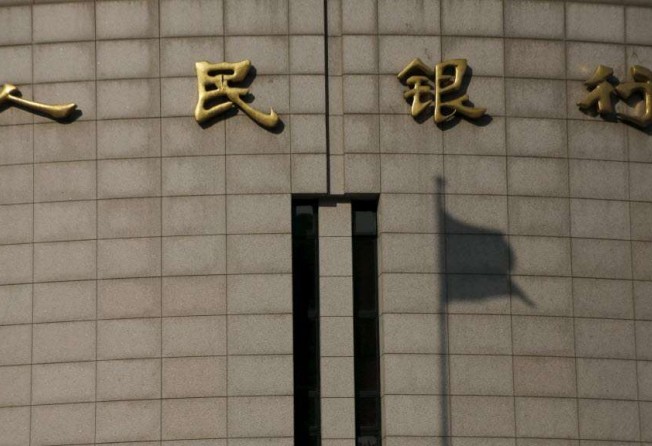Central bank denies China at risk of liquidity trap
Official statement contradicts earlier speech by PBOC chief statistician

The central bank has officially denied China is at risk of a “liquidity trap”, just weeks after a senior central bank official publicly flagged such a threat.
In a liquidity trap, the central bank keeps printing money for lenders to loan out, but people and businesses hoard cash instead of spending, making monetary policy ineffective.
Growth of M2 – a broad measure of money supply – slowed to 10.2 per cent in July, while growth in M1, mainly cash and cash deposits, accelerated to 25.4 per cent last month. It was the strongest monthly growth since June 2010, suggesting that a lot of money created by the People’s Bank of China was idle in corporate accounts.
Central bank statistics chief Sheng Songcheng said last month that the surge in corporate cash hoarding meant businesses, “to some extent”, were falling into a liquidity trap. Sheng backed that up on Tuesday, saying: “Monetary policy easing alone can’t effectively lower business costs ... and its role in stimulating aggregate demand is quite limited.”
But the PBOC said late Monday that corporate cash hoarding was “not necessarily related to” or a “criterion” of a “liquidity trap”.
“Turbulence in monthly monetary figures is normal. We suggest not over-interpreting the data of a single month,” it said. “Banks have ample liquidity. Interest rates are low. We will keep our stable monetary policy flexible and adjustable accordingly to provide an environment for stable economic growth and supply-side restructuring.”
The PBOC also provided 289 billion yuan (HK$337 billion) in liquidity on Monday to 15 lenders via the medium-term lending facility, a tool created by the central bank to ensure lenders have enough cash to lend if needed.
With or without a liquidity trap, the PBOC is facing an uphill battle to channel funds into real economic activity instead of speculation in the financial and property markets.
In July, new bank loans to corporate borrowers shrank, and mortgages made up the bulk of total new credit.
The National Development and Reform Commission said yesterday that a lot of money was not used to finance economic activity but to repay old debt and to speculate on commodities.
Mainland growth is facing downward pressure this year despite government attempts to encourage investment from non-state players. Private investment growth slowed to 2.1 per cent over the first seven months and the reluctance of private investors to spend on plant and equipment helped drag down the pace of overall investment to 8.1 per cent in July.
At the same time, there’s optimism that growth is approaching bottom.
Liu Shijin, former deputy head of the State Council’s Development Research Centre, said economic growth was “very close” to the bottom. “It’s very likely that the Chinese economy will bottom out in two or three years,” Liu said on Tuesday.